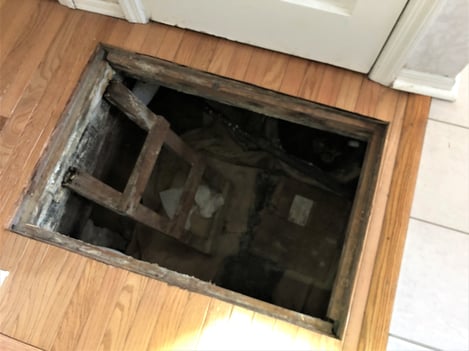Mold and Indoor Air Quality
Humans spend more time indoors than people realize. Be it at home or work (we sleep indoors), 80% of our time is spent in a built environment (indoors). Mold is a recognized indoor air contaminant and mold health effects are numerous. Living with mold is not healthy.

Your reaction to mold can be both immediate and delayed. Typically, immediate reactions to mold spores occur to individuals that are more susceptible to mold. A good example of this is someone who is allergic to say cats or nuts, being in the same room with either cats or nuts can have an immediate effect on an individual. If you do have an immediate reaction to mold, just wait, prolonged exposure to mold can break down your body’s ability to fight the mold (think of how you may try and fight a cold). Spend enough time with mold and mold will gain the upper hand in causing you discomfort.
Having visible mold in a home or office is generally understood to be an unacceptable condition, as mold is viewed as an indoor pollutant. Consider if you check into a hotel room and note mold in the room? Would you live with the mold or ask for a different room?
Now you will always have some number of invisible spores in the air wherever you are, as mold is ubiquitous and you would have a tough time to find a zero mold environment. Acceptable indoor levels are typically baseline against outdoor levels on the day testing is performed as we carry spores from outside indoors.
How does mold appear in your home or office? Mold enters an office or home through open doorways, windows, vents, and HVAC systems. Mold in the air outside can also attach itself to clothing, shoes, and pets which can then be carried indoors.
So how does mold affect your health?
Exposure to mold spores can trigger symptoms including stuffy nose, wheezing, and red or itchy eyes, or skin. More severe reactions can include fever and shortness of breath. There are studies that point to a link from early exposure to mold and the development of asthma in children.
There are three primary ways mold will affect your wellness.
First, indoor spores when inhaled, can create an autoimmune reaction in certain individuals. Mold can trigger allergies, which triggers the body’s immune system to respond. This is similar to how pollen affects people. On average inhalation of spores to the extent someone would feel health affects relate to both the quantity and type of airborne spores. If you workout in a basement with mold, the cardio portion of your routine would enhance the mold effect on you as you will be breathing deeper and heavy. We get calls of people feeling ill when they are in a room, typically a basement office or workout room in the basement and most times we discover mold the person did not know existed. There are many types of spores, some have more dramatic and immediate health effects. Spores that have high water demands to grow, these wet sticky spores are a more common irritant across a larger percentage of people.
Second, mold consumes organic material, this creates byproducts from the breakdown of organic matter releasing compounds into the air that were previously bound up in the organic material.
Third the metabolism of mold can create and release mycotoxins and MVOC compounds in the air. Mycotoxins produced by mold growing can produce poisons, with vary health effects. Certain molds are toxigenic, meaning they can produce toxins (specifically “mycotoxins”). Microbial Volatile Organic Compounds (MVOCs) have strong or unpleasant odors, they can be the source of the "moldy odor" or musty smell frequently associated with mold growth. A moldy odor suggests that mold is growing in the building and should be investigated. Exposure to MVOCs have been linked to symptoms such as headaches, nasal irritation, dizziness, fatigue, and nausea.
Mold can be a serious irritant to people exposed to mold in an indoor environment. Curren has over 20 years’ experience performing environmental assessments, including mold. Our inspectors are also trained remediators and utilize our depth of experience when completing mold inspection. After you remediate enough mold, you learn how it grows and why, this knowledge is invaluable for assessing sites for mold.
How can you help improve your indoor air quality, follow these ?
Store chemicals and paint outside the home. Ever open an airtight paint can and find the paint dried up? The container is not airtight is it and can release compounds in the air.
Since mold only grows in the presence of moisture, control the moisture. Dehumidify crawlspaces and basements, in short unconditioned spaces subject to fluctuations in humidity (moisture) feed mold growth. In short, if you have mold, you have a moisture issue.
Control humidity in your attic by using humidistat exhaust fans in attic.
Bathrooms have high moisture levels, always use exhaust fans in the bathroom, to remove moist air.
Use high rated MERV filters on your HVAC system. If you don't know what MERV is, you should google it. MERV filters can filter dust pollen and wait for it.....MOLD.
Maintain proper humidity in the living space.
